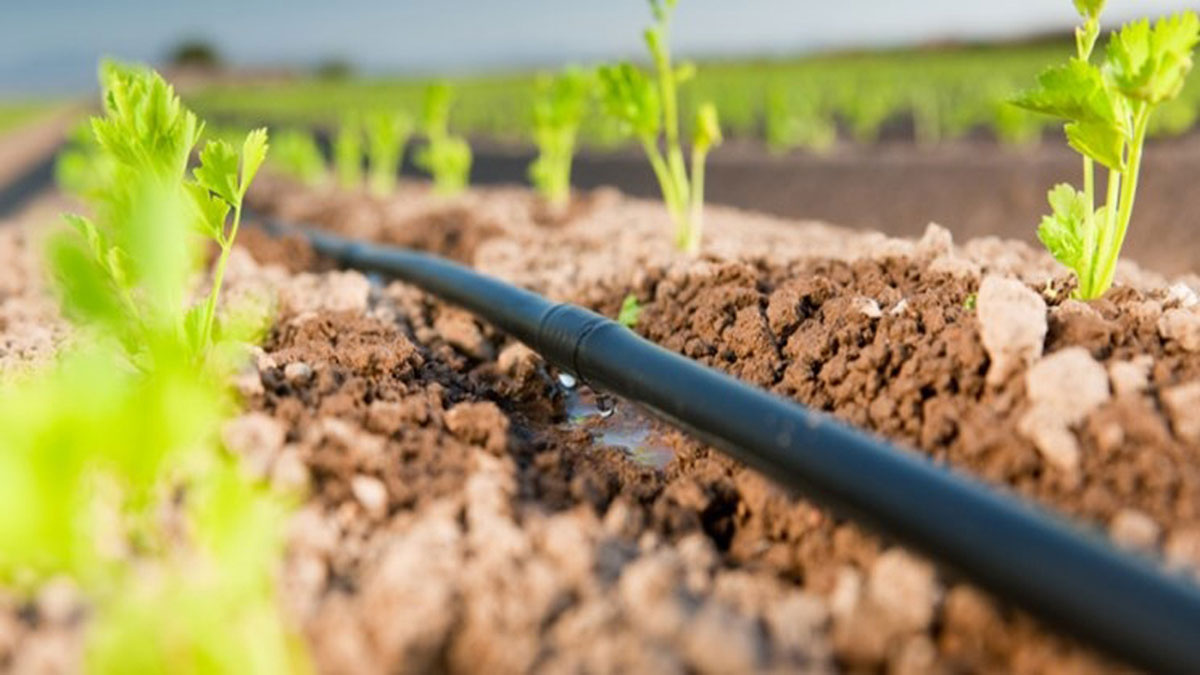Fertigation: Delivering Nutrients Through Drip Systems

Fertigation—the fusion of fertilization and irrigation—revolutionizes farming by delivering nutrients directly to plant roots via drip systems. This precision agriculture technique boosts yields, saves fertilizer, and improves soil health. Here’s how it works, its benefits, and how to implement it effectively.
🌱 What is Fertigation?
Fertigation is the injection of fertilizers into an irrigation system, allowing nutrients to be delivered with water directly to the root zone.
How It Works in Drip Irrigation:
- Soluble fertilizers are mixed with irrigation water.
- Injectors (venturi, pump-based) add nutrients to the water stream.
- Drip emitters distribute the nutrient-rich solution to plants.
✅ Advantages of Fertigation
| Benefit | Impact |
|---|---|
| 30-50% less fertilizer waste | Nutrients go straight to roots, reducing runoff. |
| Higher crop yields | Precise feeding improves plant health & productivity. |
| Saves labor & time | No manual spreading or foliar sprays needed. |
| Better soil health | Reduces salt buildup & chemical leaching. |
| Adaptable to crop stages | Adjust NPK ratios for growth, flowering, or fruiting. |
⚙️ How to Set Up a Fertigation System
1. Equipment Needed
- Fertilizer tank (for mixing nutrients).
- Injector pump (venturi or piston-driven).
- Backflow preventer (stops contamination of water supply).
- Filters (to avoid clogging emitters).
2. Choosing Fertilizers
- Water-soluble (fully dissolves to prevent clogs).
- Compatible with drip systems (low pH, non-clogging).
| Fertilizer Type | Best For | Examples |
|---|---|---|
| Liquid NPK | General crops | 20-20-20, 10-30-20 |
| Calcium Nitrate | Tomatoes, leafy greens | YaraLiva, Haifa Cal |
| Potassium Sulfate | Fruits, tubers | SOP, K-Mag |
| Organic Options | Certified organic farms | Fish emulsion, compost tea |
Installation Steps
- Connect injector to the main irrigation line.
- Mix fertilizers in the tank (follow label rates).
- Set injection rate (usually 1:100 to 1:200 ratio).
- Run system & monitor for uniform distribution.
🌿 How Fertigation Improves Nutrient Uptake
- Direct root absorption (no soil binding).
- Controlled release (avoids nutrient spikes).
- pH-balanced solutions (optimizes availability).
📌 Study: Fertigation increased tomato yields by 25% compared to granular fertilizers.
❌ Common Fertigation Mistakes to Avoid
- Using non-soluble fertilizers → Clogs emitters.
- Over-fertilizing → Burns roots, wastes money.
- Ignoring pH levels → Locks out nutrients (ideal pH: 5.8-6.5).
- Skipping filtration → Sediment blocks drip lines.
🔄 How Often Should You Fertigate?
| Crop Stage | Frequency | Nutrient Focus |
|---|---|---|
| Seedling | Weekly | High phosphorus (root growth) |
| Vegetative | 2x/week | Balanced NPK (foliage) |
| Flowering | Every watering | High potassium (fruit set) |
| Maturity | Reduce to 1x/week | Maintenance dose |
💡 Tip: Test soil/leaf tissue to fine-tune nutrient schedules.
🌍 Fertigation in Organic Farming
✅ Approved organic inputs:
- Compost tea (brewed & filtered).
- Fish hydrolysate (liquid fish fertilizer).
- Seaweed extract (micronutrient boost).
⚠️ Challenges:
- Clogging risk (use coarse filters).
- Shorter shelf life (mix fresh batches).
📈 Impact on Crop Yield & Soil Health
- Yield increases: Up to 30% for strawberries, 40% for corn.
- Soil benefits: Less compaction, higher microbial activity.
🔧 Maintenance Tips
✔ Flush lines weekly to prevent salt buildup.
✔ Clean filters after each fertigation cycle.
✔ Calibrate injectors seasonally for accuracy.
🚀 Final Takeaways
✔ Saves fertilizer & labor costs.
✔ Boosts yields with precise nutrient delivery.
✔ Works with organic & conventional systems.
✔ Requires proper setup & maintenance.
🌾 Next Step: Start with a small fertigation trial to see the benefits firsthand!
